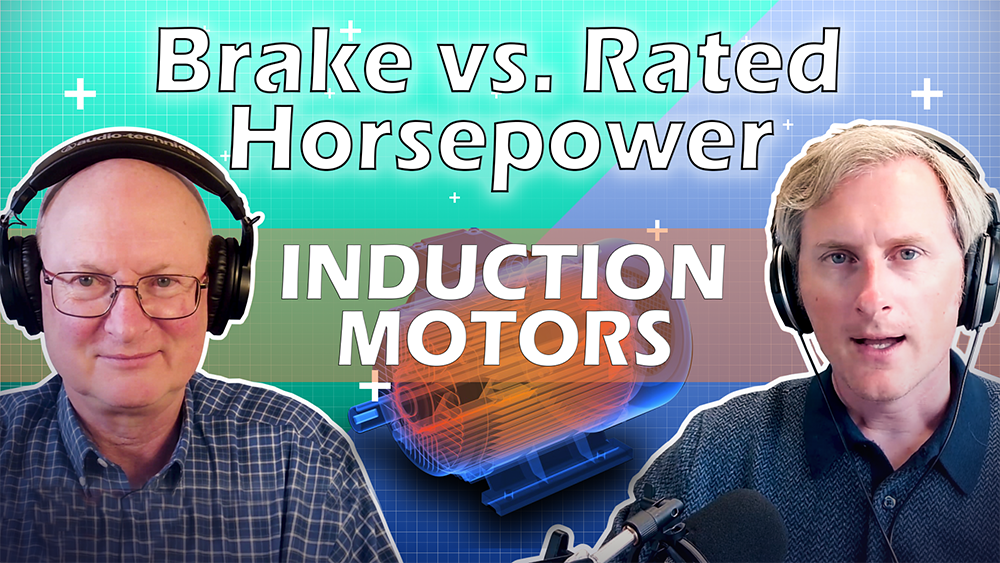In this Electrical Building Design Show, David Robison, and co-host Mark Robison, P.E. dig into the critical but often overlooked distinction between brake horsepower and rated horsepower. For engineers, both mechanical and electrical, understanding this difference is important for efficient system design and operation.
Brake horsepower is power being delivered by a motor at any given moment. Rated horsepower represents the maximum brake horsepower a motor can sustain without risking overheating or damage. It is determined by the ability of the motor to handle current without exceeding safe operating temperatures.
Highlights explored in this episode include:
- How Brake Horsepower is Calculated: Brake horsepower is calculated based on the force required to slow the motor.
- Navigating Load Variations and Service Factors: As loads surpass rated horsepower, motors heat up. Some motors allow for a margin beyond rated capacity, known as the service factor, typically around 15%.
- Application by Electrical Designers: Electrical designers follow standards and guidelines on motor amperage corresponding to rated horsepower. The standardized values ensure conservative estimations across diverse motor types and applications.
- And more…
The Bottom Line:
Brake horsepower is not a fixed value but dynamically adjusts to load demands. Rated horsepower serves as a safety threshold, preventing motor overheating and ensuring longevity. While service factors offer wiggle room, they are best avoided for optimal motor performance and durability.
In the video below, David and Mark speak in more detail regarding the difference between brake and rated horsepower. Keep watching future videos for more topics related to induction motors.
Join Our Free Webinar
April 16, 2025 • 1:00 ET / 10:00 PT
“Create Single-Line Diagrams in Revit Without Late Nights or Change Orders”

